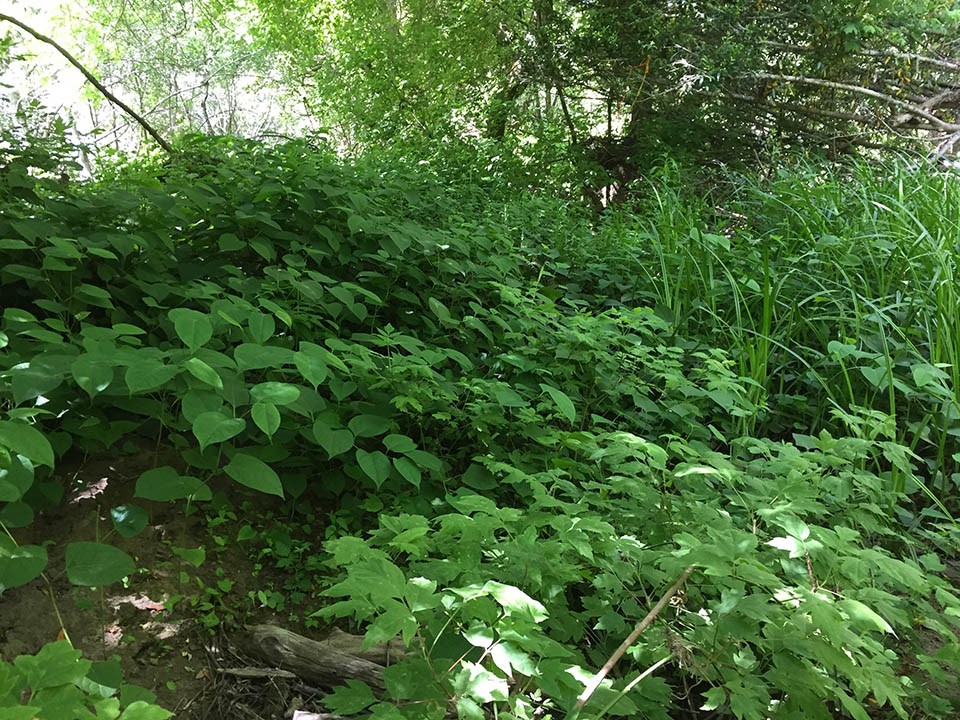Last updated: October 31, 2018
Article
Japanese Knotweed Management Making Headway Along Lagunitas Creek

NPS / Bobbi Simpson
October 2018 - Native to Japan, China, and Korea, Japanese knotweed (Fallopia japonica) is considered the 10th most invasive plant species in the world, and is considered an A-rated noxious weed by the California Department of Food and Agriculture. This fast-growing member of the buckwheat family forms tall, dense, leafy monocultures that shade out other plants. Supported by a deep and extensive underground rhizome network, it readily resprouts from as little as seven grams of plant material, making it extremely difficult to eradicate. Knotweed is hardy enough to survive on the slopes of active volcanoes and strong enough to penetrate concrete, making it a threat to both natural and developed areas.
Although Japanese knotweed is not widespread in California, it is found at a number of sites in Marin County. Roughly a third of the known populations are on National Park Service land in Lagunitas Creek, and the others are upstream at Samuel P. Taylor State Park and on private land in San Geronimo Valley.
Knotweed can spread though human disturbance or by water, and has replaced the creekside tree community in other locations with conditions similar to Lagunitas Creek. Without the shade of these trees, water temperatures increase and the insects and debris that help feed these systems diminishes. Changes like this along Lagunitas Creek would have dramatic effects on its wildlife, including endangered coho salmon and threatened steelhead trout.
Because Lagunitas Creek crosses federal, state, and private property, eradication of this weed requires an organized effort among multiple landowners. The Marin Knotweed Action Team—a coalition of county, state, and federal managers as well as NGO's—has formed to coordinate a comprehensive effort to control the species throughout the watershed.
2018 marked the third year of California Exotic Plant Management Team Japanese knotweed management along Lagunitas Creek. Six new infestations containing 24 individuals were discovered, bringing the total number of sites where this species has been found on park lands to 39. The good news is that the team also found that treatments from 2017 had yielded a 92% reduction of Japanese knotweed stems, so the overall the population has been drastically reduced.
The team is hopeful that continuing this successful early detection and coordinated response will eradicate knotweed from the Lagunitas Creek Watershed. Visit the Marin Knotweed Action Team website to learn more.
